
Sensors
Sensors are found in large numbers in automation and on every production line in every industry such as packaging, material handling, metal forming, food processing, pharmaceuticals, semiconductor and automotive, Car Wash, Food & Beverage, Pharmaceutical and Medical.
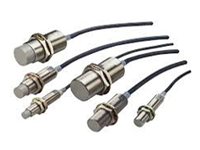
Inductive proximity sensors are used for non-contact detection of ferrous metallic objects. Their operating principle is based on a coil and oscillator that creates an electromagnetic field in the close surroundings of the sensing surface. We offer Namur, DC, AC, AC/DC and analogue types. Sensing distances from 1 up to 40 mm. Cylindrical, rectangular and special forms. Metal or thermoplastic polyester housings. Cable and plug versions.
- 2 wire Inductive Proximity Sensors (AC/ DC)
- 3 wire Inductive Proximity Sensors (AC/DC)
- 3 wire Inductive Proximity Sensor , Analogue output
- Proximity Sensors Inductive ,Switch ( Non- Flush Mountable)
- Square Type
- Dimensions (mm) 40X40X118

Capacitive sensors can detect metallic, non-metallic, transparent, opaque, liquid and solid, conductive and non-conductive substances reliably without the need for contact. They are thus well suited to detecting diverse objects or also bulk goods and liquids.
Photoelectric sensor
A photoelectric sensor, or photo eye, is a device used to detect the distance, absence, or presence of an object by using a light transmitter, often infrared, and a photoelectric receiver. They are used extensively in industrial manufacturing. There are three different functional types: opposed (through beam), retro-reflective, and proximity-sensing (diffused).

Most reliable for opaque targets
High excess gain result in long sensing range
Good performance in contaminated environment
High tolerance to misalignment
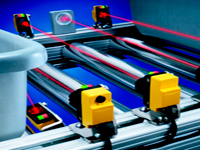
Convenient when space is limited
High excess gain result in long sensing
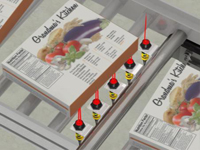
Convenient when space is limited
Used in application requiring reflectivity monitoring

Convenient when space is limited
Good performance in detecting clear materials at close range
Used in application requiring reflective monitoring
Reliable in detection of shiny or vibrating surface

Used for accurate positioning
Excellent in small color mark or small object detection application
Used for accurate counting of radiused object
High excess gain allows detection of object having low reflectivity

Definite range limit used to ignore background
High excess gain allows detection of objects having low reflectivity
Good at detecting targets of varying reflectivity.

Definite range limit used to sense backgrounds
Reliable detection when the color or shapes of the object vary
Detect object that return no light to sensor
Special Purpose Sensors

True color sensors accurately analyze and compare color to color or varying intensities of one color.
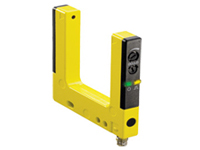
Slot sensors detect objects that pass between the two arms-one with the emitter, the other with the receiver.The fixed slot width provides reliable opposed-mode sensing of objects as small as 0.30 mm.

Label sensor accurately detects labels on web backing,
Requires no user adjustments—ADL (Adaptive Digital Logic) provides revolutionary self-learning capability
Automatically adjust sensing threshold and drift compensation
Offers typical registration accuracy of ±0.3 mm at web speeds up to 1.5 m per second
Reliably detects the presence of most types of labels on web backing, regardless of whether the labels or web are clear or opaque.
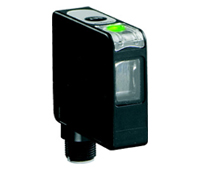
Luminescence sensors detect luminescence that is inherent in a material or luminophores that have been added to a material to make it luminescent. These are very useful for detecting UV sensitive substances like Oil, Grease, bleached paper, etc. Most pharma labels luminescence and can easily be detected by these sensors.

Temperature sensors detect small differences between the temperature of an object and the surrounding ambient temperature.
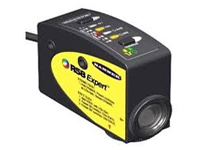
Color sensors detect subtle color contrasts to inspect registration marks, using one, two or three color LEDs.
- Senses a variety of color marks without changing sensors
- Offers configurable light- or dark-operate outputs and optional 30 milliseconds ON/OFF-delay
- Easy-to-set TEACH options: Dynamic or Static using push buttons, or remote switch
- Easy-to-read, 8-segment bar graph display for TEACH and signal strength

Fiber optic sensors are ideal for harsh conditions including high vibration, extreme heat, noisy, wet, corrosive or explosive environments. Fiber optic sensors are small enough to fit in confined areas and can be positioned precisely where needed with flexible fibers.

Ultrasonic sensors use sound waves rather than light, making them ideal for stable detection of uneven surfaces, liquids, clear objects, and objects in dirty environments. These sensors work well for applications that require precise measurements between stationary and moving objects. Typical applications include liquid and solid level measurement / control, distance measurement, and height measurement.


